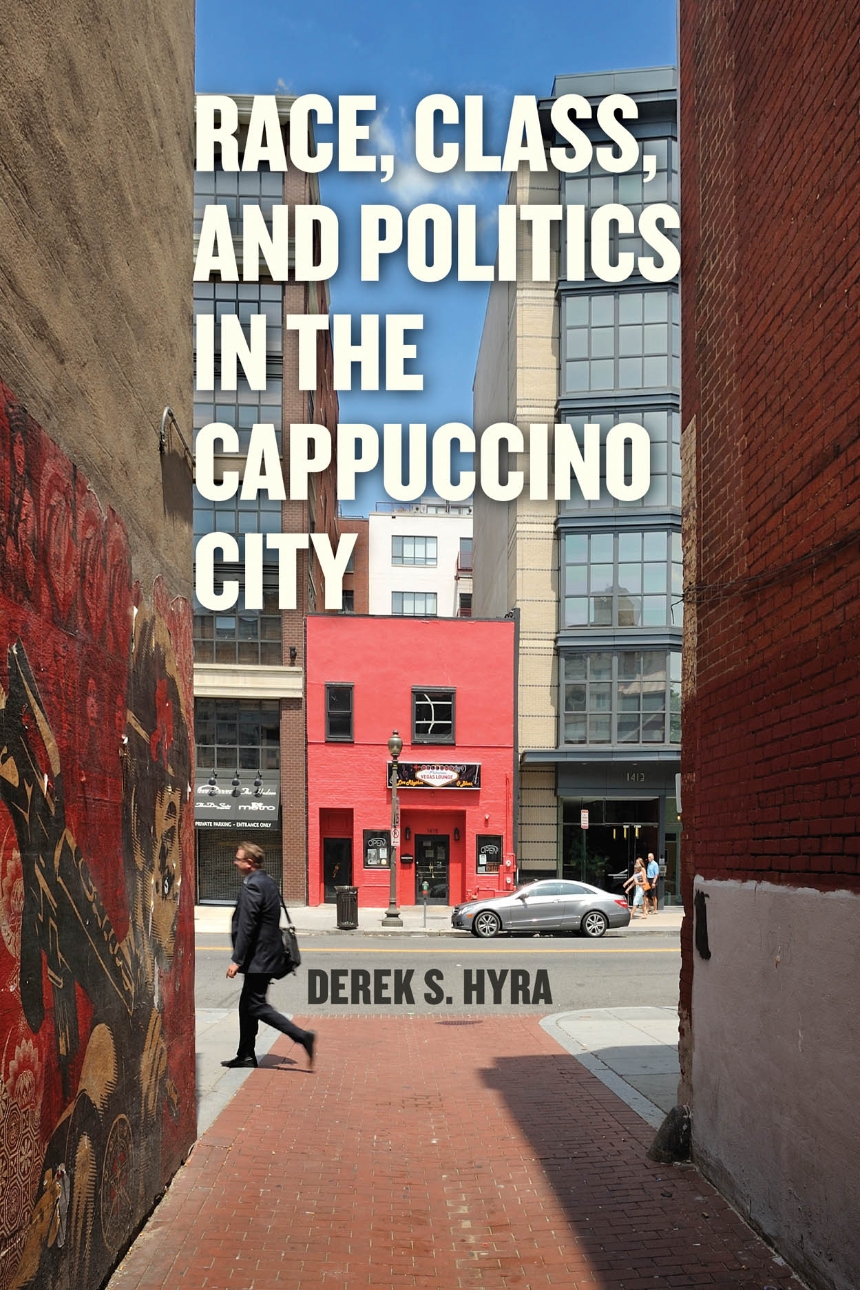Race, Class, and Politics in the Cappuccino City
For long-time residents of Washington, DC’s Shaw/U Street, the neighborhood has become almost unrecognizable in recent years. Where the city’s most infamous open-air drug market once stood, a farmers’ market now sells grass-fed beef and homemade duck egg ravioli. On the corner where AM.PM carryout used to dish out soul food, a new establishment markets its $28 foie gras burger. Shaw is experiencing a dramatic transformation, from “ghetto” to “gilded ghetto,” where white newcomers are rehabbing homes, developing dog parks, and paving the way for a third wave coffee shop on nearly every block.
Race, Class, and Politics in the Cappuccino City is an in-depth ethnography of this gilded ghetto. Derek S. Hyra captures here a quickly gentrifying space in which long-time black residents are joined, and variously displaced, by an influx of young, white, relatively wealthy, and/or gay professionals who, in part as a result of global economic forces and the recent development of central business districts, have returned to the cities earlier generations fled decades ago. As a result, America is witnessing the emergence of what Hyra calls “cappuccino cities.” A cappuccino has essentially the same ingredients as a cup of coffee with milk, but is considered upscale, and is double the price. In Hyra’s cappuccino city, the black inner-city neighborhood undergoes enormous transformations and becomes racially “lighter” and more expensive by the year.
Race, Class, and Politics in the Cappuccino City is an in-depth ethnography of this gilded ghetto. Derek S. Hyra captures here a quickly gentrifying space in which long-time black residents are joined, and variously displaced, by an influx of young, white, relatively wealthy, and/or gay professionals who, in part as a result of global economic forces and the recent development of central business districts, have returned to the cities earlier generations fled decades ago. As a result, America is witnessing the emergence of what Hyra calls “cappuccino cities.” A cappuccino has essentially the same ingredients as a cup of coffee with milk, but is considered upscale, and is double the price. In Hyra’s cappuccino city, the black inner-city neighborhood undergoes enormous transformations and becomes racially “lighter” and more expensive by the year.
Read the first chapter.
240 pages | 14 halftones, 6 line drawings, 17 tables | 6 x 9 | © 2017
History: American History
Political Science: Urban Politics
Sociology: Race, Ethnic, and Minority Relations, Social Institutions, Urban and Rural Sociology
Reviews
Table of Contents
Acknowledgments
Part I: The Setting
Chapter 1: Making the Gilded Ghetto: Welcome to 14th Street
Chapter 2: The Rise and Fall of DC’s Black Political Machine
Chapter 3: From Company Town to Postindustrial Powerhouse
Part II: What’s Going On?
Chapter 4: Black Branding
Chapter 5: Race, Class, and Sexual Orientation
Chapter 6: Linking Processes of Political and Cultural Displacement
Part III: What Does It All Mean?
Chapter 7: The Cappuccino City
Chapter 8: Making Equitable Communities
Appendix: Select Washington, DC, Old Downtown, and Shaw/U Street Demographics
Notes
References
Index
Part I: The Setting
Chapter 1: Making the Gilded Ghetto: Welcome to 14th Street
Chapter 2: The Rise and Fall of DC’s Black Political Machine
Chapter 3: From Company Town to Postindustrial Powerhouse
Part II: What’s Going On?
Chapter 4: Black Branding
Chapter 5: Race, Class, and Sexual Orientation
Chapter 6: Linking Processes of Political and Cultural Displacement
Part III: What Does It All Mean?
Chapter 7: The Cappuccino City
Chapter 8: Making Equitable Communities
Appendix: Select Washington, DC, Old Downtown, and Shaw/U Street Demographics
Notes
References
Index
